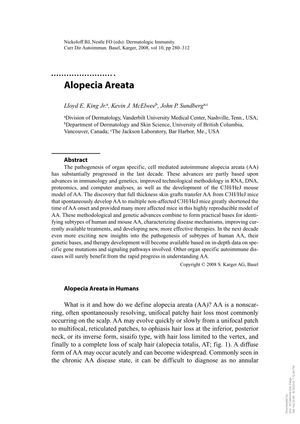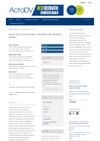Alopecia Areata: Pathogenesis, Genetic Factors, and Treatments Using Mouse Models
January 2008
in “
KARGER eBooks
”

TLDR The document concludes that ongoing research using animal models is crucial for better understanding and treating Alopecia Areata.
The document from 2008 provides a comprehensive overview of Alopecia Areata (AA), an autoimmune condition causing hair loss, by examining its pathogenesis, genetic factors, and potential treatments using mouse models. It reports a prevalence of 158 per 100,000 individuals and a lifetime risk of 1.7% for AA, with associations to other autoimmune conditions like thyroid disease and vitiligo. The document details the role of T lymphocytes in AA and the secondary nature of humoral responses to hair follicle antigens. Genetic predisposition is highlighted through the association with HLA class II alleles and the AIRE gene, and the use of animal models such as C3H/HeJ mice and DEBR rats is emphasized for their contributions to understanding AA. A study involving 105 female C3H mice found that the development of anti-hair follicle antibodies was not sufficient to induce AA, suggesting a complex interplay of genetic and environmental factors in the disease. The document also discusses the potential of the skin graft induction model for drug screening and the effectiveness of treatments like corticosteroids in mice, which parallels human treatment responses. Overall, the document underscores the importance of continued research using animal models to advance the understanding and treatment of AA.

